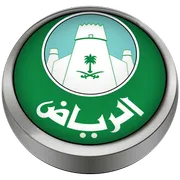The National Museum of Saudi Arabia, located in the capital city of Riyadh, is a must-visit destination for anyone seeking to delve into the rich history, culture, and heritage of Saudi Arabia. As part of the King Abdulaziz Historical Center, the museum is a key institution dedicated to preserving and showcasing the history of the Arabian Peninsula, from prehistoric times to the modern era.
A Journey Through Saudi Arabia’s History
The museum’s collection is divided into eight main galleries, each focusing on different periods and aspects of Saudi Arabian history. Visitors can explore exhibits on the natural environment of the Arabian Peninsula, early human settlements, and the pre-Islamic civilizations that once thrived in the region. Notably, the museum offers an in-depth look at the rise of Islam, the expansion of the Islamic empire, and the significance of the Arabian Peninsula in world history.
One of the museum’s highlights is the section dedicated to the unification of Saudi Arabia under King Abdulaziz Al Saud. This gallery showcases artifacts, documents, and multimedia displays that illustrate the creation of the modern Saudi state. Through engaging exhibits, visitors gain insight into the political, social, and cultural transformations that shaped Saudi Arabia into the nation it is today.
Innovative Exhibits and Artifacts
The National Museum employs state-of-the-art technology to enhance the visitor experience. Many exhibits feature multimedia displays, including videos, interactive touchscreens, and holographic projections, bringing the history of Saudi Arabia to life. Artifacts such as ancient pottery, tools, manuscripts, and coins provide tangible links to the past, offering visitors a chance to connect with the history in a personal and immersive way.
One of the museum’s most impressive displays is the replica of the Nabatean tombs, modeled after those found in the ancient city of Madain Saleh. This exhibit provides a glimpse into the architectural and cultural achievements of one of the region’s most fascinating ancient civilizations.
Promoting Cultural Understanding
The National Museum of Saudi Arabia also plays an important role in promoting cultural exchange and understanding. Through its rotating exhibitions, educational programs, and collaborations with international museums, the institution fosters a deeper appreciation for the kingdom’s cultural heritage among both Saudis and international visitors. The museum regularly hosts special events, lectures, and workshops, making it a vibrant hub for learning and cultural engagement.
One of the most notable cultural exchange initiatives is the museum’s collaboration with UNESCO in efforts to preserve and promote Saudi Arabia’s UNESCO World Heritage Sites, such as the historic Diriyah and the rock art of the Hail Region. These partnerships highlight the global importance of Saudi Arabia’s cultural heritage and its role in the broader narrative of human history.
A Center for Research and Education
Beyond its role as a public museum, the National Museum of Saudi Arabia serves as a center for historical research and education. Scholars, archaeologists, and historians frequently use the museum’s extensive archives and research facilities to study the history of the Arabian Peninsula. The museum’s library holds a vast collection of books, manuscripts, and academic papers, making it a valuable resource for researchers from around the world.
A Window into Saudi Arabia’s Rich Legacy
The National Museum of Saudi Arabia in Riyadh is not just a repository of the nation’s history, but a dynamic institution dedicated to educating the public and fostering cultural exchange. Through its innovative exhibits, historical artifacts, and commitment to research, the museum offers visitors an immersive experience that spans millennia. Whether you are a history enthusiast, a student of culture, or simply a curious traveler, the National Museum provides a unique opportunity to explore the heritage of Saudi Arabia and understand its role in shaping the broader history of the world.
